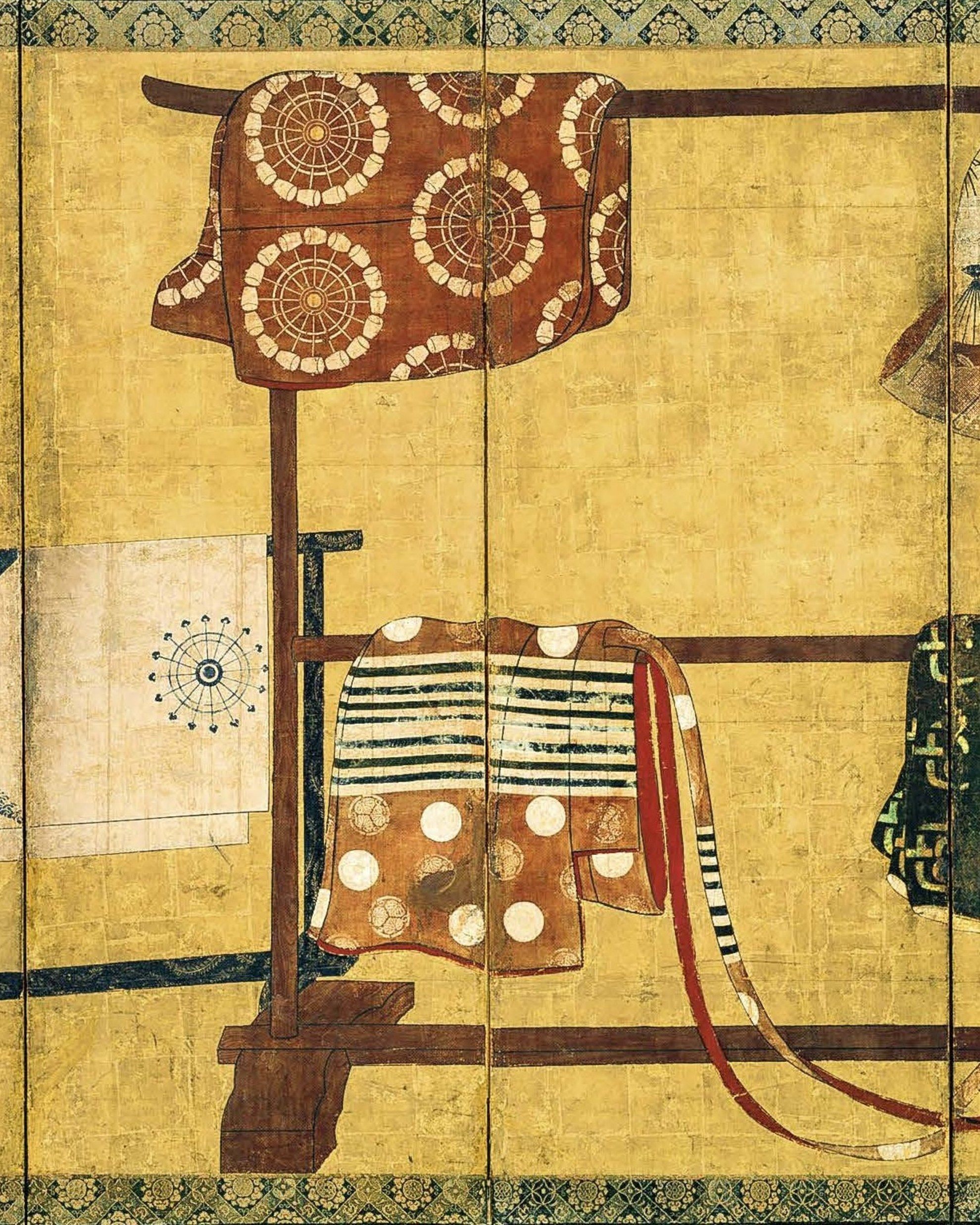
“Tagasode: whose sleeves?”
“TAGASODE: WHOSE SLEEVES?”
Gian Carlo CalzaFolding screens may shelter from breezes, but they’re also meant to hide something. But what do they hide? If beautiful, elegant women’s garments are draped over a folding screen, then there can be no doubt as to the answer, and desire is kindled. A thousand years ago, a classical Japanese poet posed a question requiring no answer: “Tagasode?: Whose sleeves?” Seven centuries later, in a profoundly changed society, brilliant artisans built the folding screens that can be admired on these pages: dreamlike creations that delicately touch the heartstrings of an erotic fetishism, in absentia. In today’s Japan those same fantasies have morphed into modern pop, commercial versions, such as burusera: the sale (even in supermarkets) of used undergarments, worn by female students. Transformations, in any case, that continue to perpetuate the mythology of tagasode folding screens.






